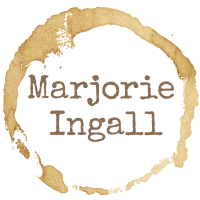I am so happy with how this came out. I mean, I really wish it were longer, because there aren’t enough twists and possibilities, but given the resources we had, awesomeness. Len and Liel at Tablet knocked themselves out, and I think the illustrator really made it look like those old Choose Your Own Adventure books from the ’70s and ’80s. I loved them — I know they’re reissuing them, and I wonder whether kids today get a kick out of books like these, or whether the Interwebs have put the kibosh on ’em.

This is brilliant.
I sort of doubt that this choose-your-own-adventure format would ever catch on again. I think people just liked the idea of it, but it is fundamentally flawed as an artistic format (unless you make a parody of it like you did.).
In art, the audience needs to understand (or “get”) the intentions of the artists. In most cases, these intentions are inexplicable, yet we need to feel that we get it at some level. The only way to get the intention of the writer in the choose-your-own-adventure format is to meticulously go through all possible scenarios. This process is awkward and often frustrating; it makes you want to read all possible scenarios in a linear format without having to flip through the pages back and forth (Even then you are still left unsure if you went through all possible scenarios).
I think art is a process of understanding ourselves by understanding others. For that to happen, we need to understand the artist first (albeit in our own way). The choose-your-own-adventure format interferes with this process because the reader essentially writes his own story. If so, why not just write his own story for real?
The reason why the idea of this format was interesting to many people, I suspect, is because we all assume that “choice” is a good thing. We all hoard possibilities of choice without actually making any use of them. We like choice intellectually, but we fear it emotionally. So the format appeals to us intellectually but not emotionally, which in turn means that it would not have a lasting value.
I think the only way this format can be effectively used in art is to turn the format itself into the content of art, which is basically what you did. John Cage did precisely this too. In one concert, the musicians were already performing when the first person walked into the auditorium, and they would not stop playing until the last person left. In this process, everyone experienced a different piece of music. Cage’s work is all about effacing artistic intentions, so, many of his compositions and performances had a choose-your-own-adventure aspect to them. The reason why his work is not frustrating (at least to me) is because we get his intention (which is to efface intention). We feel perfectly OK (in fact encouraged) to ignore other possible scenarios, because the one we experienced is the only version that matters, which also has a philosophical beauty to it.
I think the choose-your-own format actually works BETTER online. And I also think this particular adventure is absolute perfection. Speaking as someone without kids, natch.
thanks, all. nicole, how old is your son? i was surprised that my daughter wasn’t into them (i took a few out of the library in preparation for doing this story). i’d be curious whether kids who grew up with online multiplayer games are less interested in this kind of adventure in book form. (the new versions DO have an online component, tho i haven’t checked ’em out.)
dyske, your comment reminded me of david ives’s play (part of his collection All in the Timing) “philip glass buys a loaf of bread.” a very, VERY funny commentary on content and form!
hmm, and here’s a review from Publisher’s Weekly of a forthcoming title that sounds interesting. Meanwhile: Pick a Path. 3,856 Story Possibilities by Jason Shiga (Abrams/Amulet, forthcoming in March): “A mathematician/cartoonist whose best works (Bookhunter; Fleep) play with form and logic, Shiga has created both an enchanting graphic novel and a delightful physical object. Building on the concept of the Choose Your Own Adventure books, Shiga allows readers to select among thousands of story lines. The first question is simple: “Chocolate or vanilla?†From there, readers follow thin tubes and tabs in circuitous paths throughout the book, dictated by their choices. Sometimes the story takes a reader right to left through panels on the page, sometimes up or down, and readers’ decisions may have them skip forward or backward throughout the text […] In the electronic media era, it’s refreshing to encounter a work that makes such unique use of the physical nature of the book.”